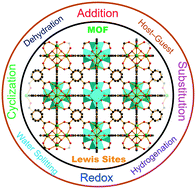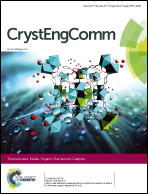Metal–organic frameworks with Lewis acidity: synthesis, characterization, and catalytic applications
Abstract
Metal–organic frameworks (MOFs) are exquisitely architected through the pervasive coordination bonds between inorganic metal nodes and organic ligands. Marked by high porosity, tunable internal surface functionality, and concentrated metal sites, they are believed to act as the next generation adsorbent and catalytic materials. In particular, the presence of unsaturated metal centers and electron-deficient groups, capable of acting as Lewis acid sites, has made MOFs highly promising in heterogeneous catalysis applications. In this Highlight, we review the recent development in the design and synthesis of MOFs with Lewis acidity, the characterization techniques of Lewis acid sites, and their applications in heterogeneous catalysis.

- This article is part of the themed collections: Editor’s Collection: Zirconium based MOFs for catalysis, Editors collection: Metal Organic Frameworks as catalysts for water splitting and CO2 reduction, Crystalline Materials for Environmental Remediation, 2017 Highlight article collection and Metal-Organic Framework Catalysis


 Please wait while we load your content...
Please wait while we load your content...